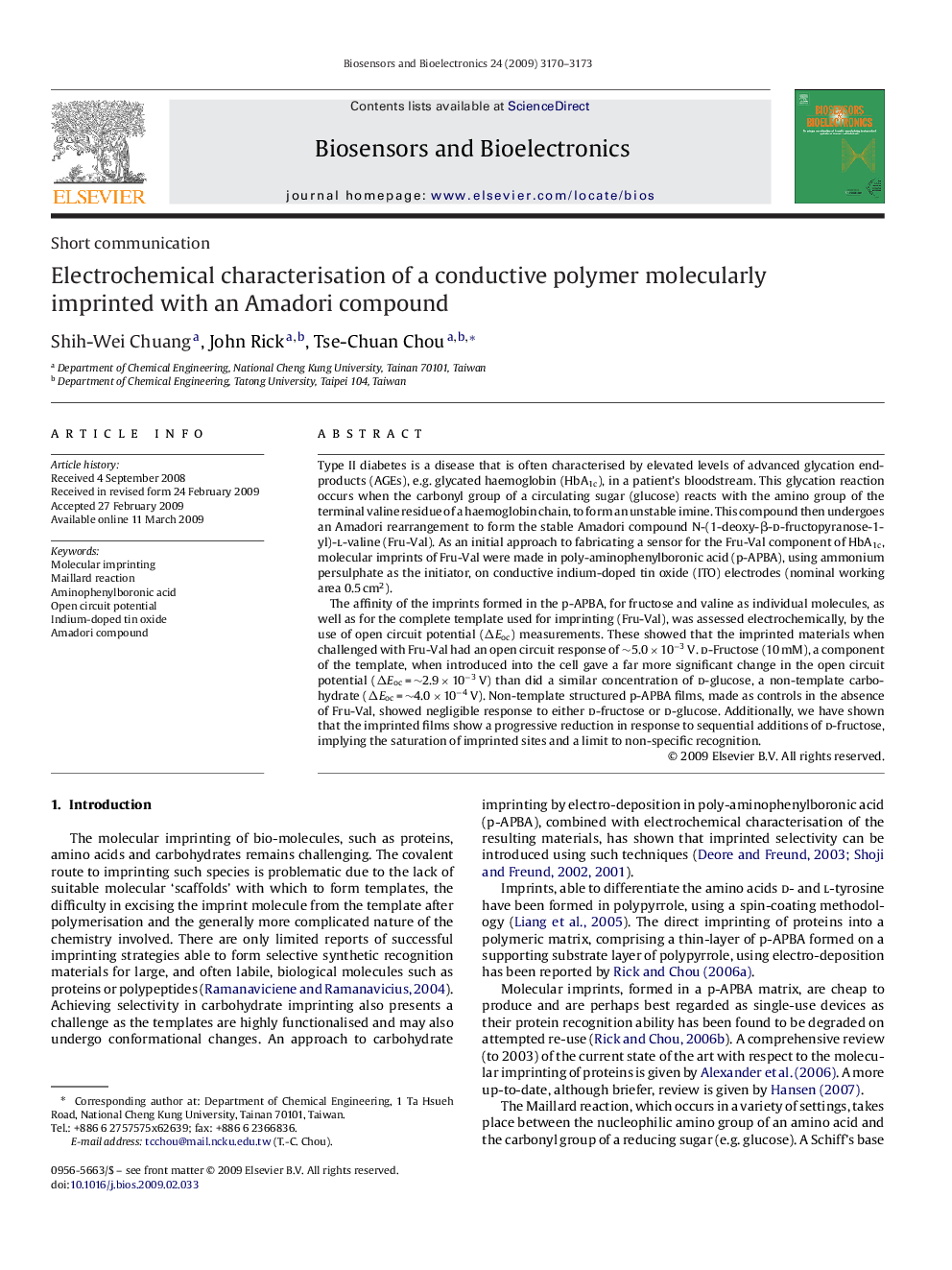| کد مقاله | کد نشریه | سال انتشار | مقاله انگلیسی | نسخه تمام متن |
|---|---|---|---|---|
| 868951 | 909816 | 2009 | 4 صفحه PDF | دانلود رایگان |

Type II diabetes is a disease that is often characterised by elevated levels of advanced glycation end-products (AGEs), e.g. glycated haemoglobin (HbA1c), in a patient's bloodstream. This glycation reaction occurs when the carbonyl group of a circulating sugar (glucose) reacts with the amino group of the terminal valine residue of a haemoglobin chain, to form an unstable imine. This compound then undergoes an Amadori rearrangement to form the stable Amadori compound N-(1-deoxy-β-d-fructopyranose-1-yl)-l-valine (Fru-Val). As an initial approach to fabricating a sensor for the Fru-Val component of HbA1c, molecular imprints of Fru-Val were made in poly-aminophenylboronic acid (p-APBA), using ammonium persulphate as the initiator, on conductive indium-doped tin oxide (ITO) electrodes (nominal working area 0.5 cm2).The affinity of the imprints formed in the p-APBA, for fructose and valine as individual molecules, as well as for the complete template used for imprinting (Fru-Val), was assessed electrochemically, by the use of open circuit potential (ΔEoc) measurements. These showed that the imprinted materials when challenged with Fru-Val had an open circuit response of ∼5.0 × 10−3 V. d-Fructose (10 mM), a component of the template, when introduced into the cell gave a far more significant change in the open circuit potential (ΔEoc = ∼2.9 × 10−3 V) than did a similar concentration of d-glucose, a non-template carbohydrate (ΔEoc = ∼4.0 × 10−4 V). Non-template structured p-APBA films, made as controls in the absence of Fru-Val, showed negligible response to either d-fructose or d-glucose. Additionally, we have shown that the imprinted films show a progressive reduction in response to sequential additions of d-fructose, implying the saturation of imprinted sites and a limit to non-specific recognition.
Journal: Biosensors and Bioelectronics - Volume 24, Issue 10, 15 June 2009, Pages 3170–3173